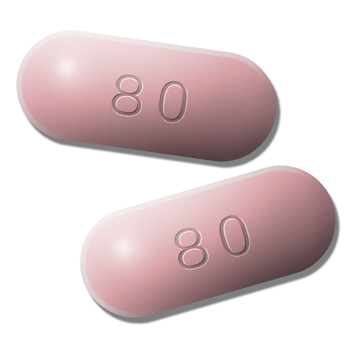For Consumers
FDA: Limit Use of 80 mg Simvastatin
 |
 Get Consumer Updates by E-mail
Get Consumer Updates by E-mail
 Share copies of this article (401 KB)
Share copies of this article (401 KB)
The Food and Drug Administration is recommending that the use of drugs containing 80 mg of simvastatin—the highest approved dose of the popular cholesterol-lowering statin—be sharply curtailed because of the risk of muscle injury.
FDA says this dose should only be used by patients who have been taking it for 12 months or longer without ill effect.
“Our overall goal is to get doctors to not start patients on 80 mg of simvastatin,” says Eric Colman, M.D., deputy director of FDA’s Division of Metabolism and Endocrinology Products.
And if health care professionals find that patients now taking 40 mg of simvastatin aren’t meeting their LDL cholesterol goal, FDA is advising them to choose a different statin rather than raising the simvastatin dose to 80 mg, says Amy Egan, M.D., deputy director for safety in the FDA division.
All statins, despite their proven benefit in lowering the risk of heart attacks and strokes, carry some risk of an injury called myopathy, characterized by unexplained muscle weakness or pain.
But the risk is greater for patients who take the 80 mg doses of simvastatin, especially in the first year of treatment. Colman says the muscle damage is often caused by interactions with other medications. And some people are genetically predisposed towards simvastatin-related myopathy, he says.
Last year, an estimated 2.1 million people were prescribed a medication containing 80 mg of simvastatin, says Egan. “It is the most potent statin available in generic form and is relatively inexpensive,” she notes.
The statin is sold under the brand name Zocor and as a single-ingredient generic drug. It is also sold in combination with ezetimibe as Vytorin, and niacin as Simcor.
FDA has revised the drug labels for simvastatin and Vytorin to include the new restrictions for the 80 mg dose, says Egan. The labels of simvastatin, Vytorin and Simcor have all been changed to include dosing recommendations when these drugs are used with medicines that can increase the level of simvastatin in the body, thus increasing the risk of myopathy.
Like all statins, simvastatin is used to lower the amount of low-density lipoprotein (LDL) cholesterol—known as “bad cholesterol”—in the blood. And the 80 mg dose of simvastatin has been shown to lower LDL cholesterol by an additional 6% over the 40 mg dose.
But myopathy can be debilitating. Moreover, a rare form of myopathy, called rhabdomyolysis, can lead to kidney failure and death.
Colman says one thing FDA does not want patients to do is stop taking their statins without consulting their doctor. “The benefits of the treatment far outweigh the risks,” he says, calling occurrences of rhabdomyolysis “extremely rare.”
But Egan says you should contact your health care professional if you have:
- Muscle pain, tenderness or weakness
- Dark or red-colored urine
- Unexplained fatigue
The FDA recommendation was prompted by a comprehensive review of clinical trial data and data from the agency’s Adverse Event Reporting System, one of FDA's most important tools for tracking the safety of drugs once they are on the market.
Egan explained that FDA did not want to risk the health of patients who have been successfully treated with the medication for a year or more by pulling it off the market. During the next year, the agency will monitor prescription data to determine if the labeling changes are successful in limiting the use of 80 mg simvastatin.
This article appears on FDA's Consumer Updates page, which features the latest on all FDA-regulated products.
June 8, 2011
Consumer Updates on Safe Use
Safe Use Initiative: Preventing Harm from Medicines FDA Acts to Reduce Harm from Opioid Drugs How to Dispose of Unused Medicines Ten Tips to Prevent an Accidental Overdose Reducing Fever in Children: Safe Use of Acetaminophen Lock it Up: Medicine Safety in Your Home Improperly Discarded 'Sharps' Can Be Dangerous
For More Information
FDA Drug Safety Communication: New restrictions, contraindications, and dose limitations for Zocor (simvastatin) to reduce the risk of muscle injury FDA Drug Safety Communication: Ongoing safety review of high-dose Zocor (simvastatin) and increased risk of muscle injury High Cholesterol--Medicines To Help You








